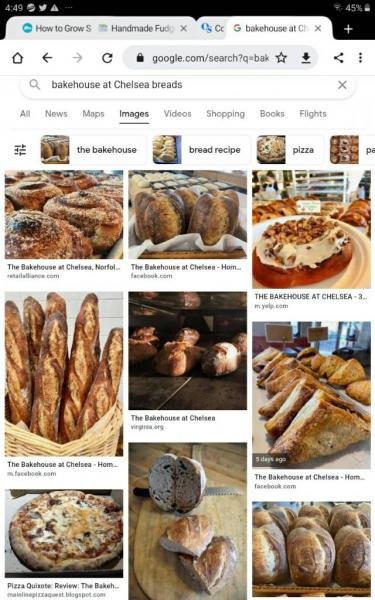https://tasteoffrancemag.com/trending/endangered-species-the-french-baguette-faces-extinction/
Good bakeries will offer a variety of bread, including a baguette tradition, an artisan-made loaf containing just four ingredients (flour, water, yeast, salt) and no additives.
What is not mentioned in the article is pre-1890 wheat was whole, stone ground course particle wheat and the riser was sourdough or poolish. The whole, stone ground course particle wheat used to make bread with a sourdough starter can sustain life indefinitely. Refined all purpose flour using yeast is a meal filler.
The book quote below mentions whole wheat bread. There is a difference between whole, stone ground course particle wheat bread and whole wheat bread. Whole wheat flour can be manufactured using reconstituted flour containing refined flour with some of the wholemeal component added.
Source: Wheat Belly - Lose the Wheat, Lose the Weight - William Davis MD
LESSONS FROM A WHEAT-FREE EXPERIMENT
An interesting fact: Whole wheat bread (glycemic index 72) increases blood sugar as much as or more than table sugar, or sucrose (glycemic index 59). (Glucose increases blood sugar to 100, hence a glycemic index of 100. The extent to which a particular food increases blood sugar relative to glucose determines that food’s glycemic index.) So when I was devising a strategy to help my overweight, diabetes-prone patients reduce blood sugar most efficiently, it made sense to me that the quickest and simplest way to get results would be to eliminate the foods that caused their blood sugar to rise most profoundly: in other words, not sugar, but wheat. I provided a simple handout detailing how to replace wheat-based foods with other low-glycemic whole foods to create a healthy diet.
After three months, my patients returned to have more blood work done. As I had anticipated, with only rare exceptions, blood sugar (glucose) had indeed often dropped from diabetic range (126 mg/dl or greater) to normal. Yes, diabetics became nondiabetics. That’s right: Diabetes in many cases can be cured—not simply managed—by removal of carbohydrates, especially wheat, from the diet. Many of my patients had also lost twenty, thirty, even forty pounds.
But it’s what I didn’t expect that astounded me.
They reported that symptoms of acid reflux disappeared and the cyclic cramping and diarrhea of irritable bowel syndrome were gone. Their energy improved, they had greater focus, sleep was deeper. Rashes disappeared, even rashes that had been present for many years. Their rheumatoid arthritis pain improved or disappeared, enabling them to cut back, even eliminate, the nasty medications used to treat it. Asthma symptoms improved or resolved completely, allowing many to throw away their inhalers. Athletes reported more consistent performance.
Thinner. More energetic. Clearer thinking. Better bowel, joint, and lung health. Time and time again. Surely these results were reason enough to forgo wheat. What convinced me further were the many instances in which people removed wheat, then permitted themselves a wheat indulgence: a couple of pretzels, a canapé at a cocktail party. Within minutes, many would experience diarrhea, joint swelling and pain, or wheezing. On again, off again, the phenomenon would repeat itself. What started out as a simple experiment in reducing blood sugars exploded into an insight into multiple health conditions and weight loss that continues to amaze me even today.

 .
.